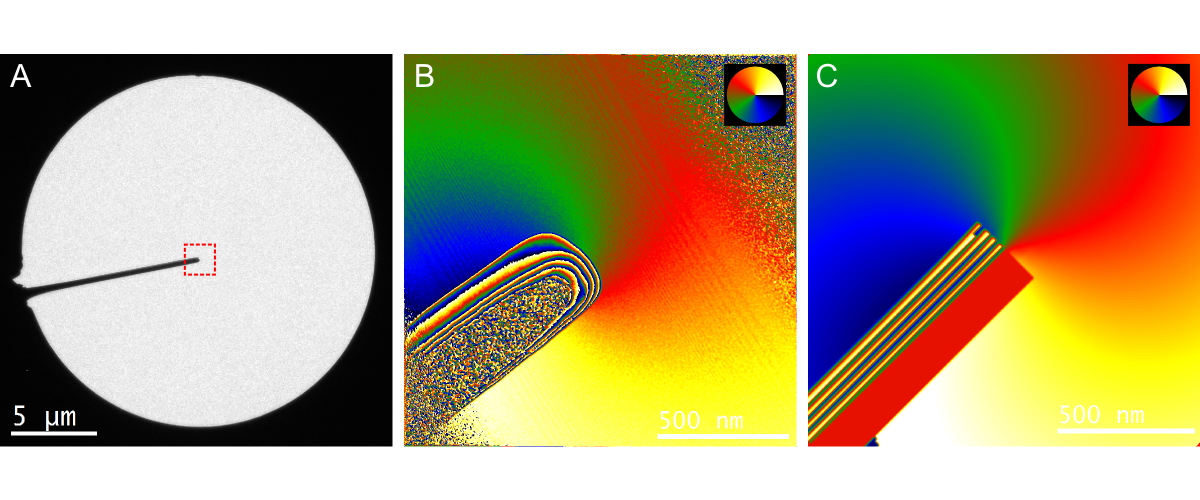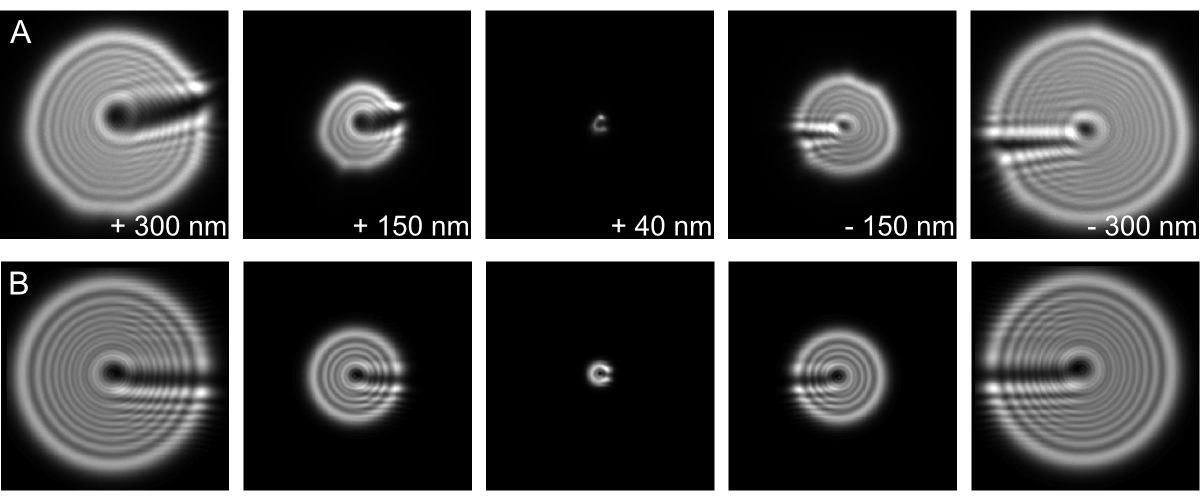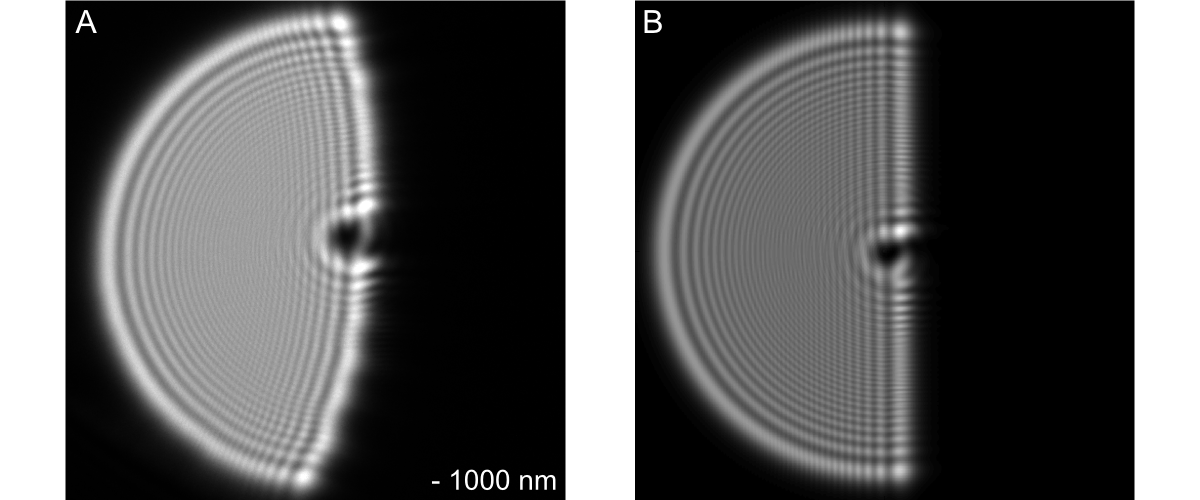IT-1-P-1486 Magnetic monopole like fields and electron vortices
The search for magnetic monopole particles has been in vain so far. However, an approximation to a magnetic monopole field can be obtained at the tip of a long, thin, nanoscopic magnetic needle [1,2]. We demonstrate that the interaction of an electron beam with such a field produces an electron vortex beam just like was predicted for a true magnetic monopole [3]. The total orbital angular momentum (OAM) produced by the magnetic needle can be precisely tuned by carefully selecting the amount of magnetic flux via the needle cross section.
The magnetic needle is extracted from a 60 nm thick nickel film using focused ion beam (FIB) milling. It is then deposited on top of a gold plated silicon-nitride grid with one end suspended over a pre-cut aperture hole (Fig.1 A). This aperture allows the impinging electron beam to interact with only one end of the needle. The magnetic field at the tip causes the fast electrons to obtain a spiral phase shift via the Aharanov-Bohm effect as revealed by holography in field free conditions in a transmission electron microscope (TEM) (Fig. 1B). The width of the needle is reduced in the FIB until the flux approaches one fluxon (total phase shift of to 2pi). Comparing the experimental results with simulations (Fig. 1C), an OAM of 0.8 was estimated.
In order to confirm the existence of a vortex after letting an electron beam interact with the magnetic needle aperture, a focal series was acquired in the far field plane of the needle (Fig.2 A). The presence of a dark center which does not disappear upon focusing is typical for a vortex beam, as demonstrated in simulated images (Fig. 2B). A second confirmation of the vortex character was made by cutting the slightly defocused far field images with the sharp edge of an objective aperture and noting the configuration of the Fresnel fringes [4]. Close to the vortex core, the phase dislocation pattern appears in the Fresnel fringes (Fig. 3A). The number of non-connected lines gives an approximation of the total OAM, close to 1 in the present case, confirming the holography result (Fig. 1B). The Fresnel fringes agree remarkably well with simulations (Fig. 3B).
An aperture containing such a monopole-like field provides a unique way of creating electron vortex beams with a pure OAM value, independent of the electron energy. As almost all the incoming electrons transforms into a specific OAM state, a high intensity vortex beam is created, greatly improving the potential for atomic scale magnetic measurements at much improved signal to noise ratios.
1. Béché A. et al., Nature Physics (2014), 10, p. 26-29.
2. Kasama T. et al., MRS Proc. (2004), 839, p. 107-118.
3. Aharonov Y. and Bohm D., Phys. Rev. (1959), 115, p. 485-491.
4. Verbeeck J. et al., Nature (2010), 467, p. 301-304.
This work was financially supported by the European Union: ERC grant 246791 COUNTATOMS, ERC Starting Grant 278510 VORTEX, Integrated Infrastructure Initiative grant 312483-ESTEEM2.


